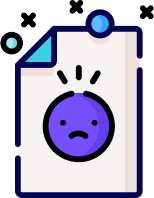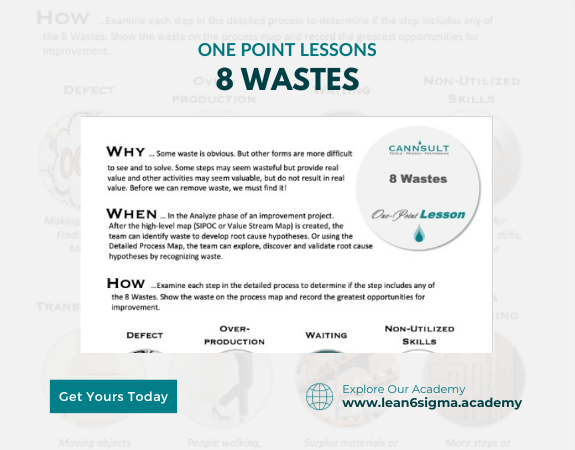8 Wastes
Reduce Costs
Improve your Quality
Become more efficient, less running around!
Improve efficiency
Faster Lead times
Customer Service
The 8 Wastes represent common sources of inefficiency and waste in processes. Identifying and eliminating these wastes is a fundamental principle of Lean methodology.
Description:
The 8 Wastes are categories of non-value-adding activities and sources of inefficiency within a process. In Lean thinking, eliminating these wastes is crucial to improving productivity, reducing costs, and enhancing overall efficiency.
The 8 Wastes:
Transportation Waste: Unnecessary movement or transportation of materials or products within a process. It can lead to damage, delays, and increased costs.
Inventory Waste: Excess inventory or overproduction beyond what is immediately needed. It ties up capital, takes up space, and may lead to obsolescence.
Motion Waste: Unnecessary movement or actions by people or equipment to perform a task. It can lead to physical strain and inefficiency.
Waiting Waste: Idle time when work is paused or delayed due to bottlenecks, lack of materials, or other reasons. It leads to reduced productivity.
Overproduction Waste: Producing more than the customer demands, which can result in excess inventory, increased storage costs, and longer lead times.
Overprocessing Waste: Adding extra steps, features, or processes that don't provide additional value to the customer. It increases costs without improving quality.
Defect Waste: The need to correct errors or defects in products or processes, including rework or scrap. It leads to increased costs and customer dissatisfaction.
Underutilized Talent: Not fully utilizing the skills, knowledge, and creativity of employees. It's a waste of human potential and innovation.
Steps to Eliminate the 8 Wastes:
Identify Wastes: Analyze your processes to identify instances of the 8 Wastes. Visual tools like value stream mapping can help.
Prioritize: Focus on addressing the most significant wastes that have the most impact on your operations or customer satisfaction.
Implement Improvements: Develop and implement strategies to eliminate or reduce the identified wastes. This may involve process redesign, employee training, or technology upgrades.
Continuous Improvement: Continuously monitor your processes to ensure that waste reduction efforts are sustained and improved over time.
Benefits:
Increased efficiency and productivity
Reduced costs
Faster lead times
Improved quality
Greater customer satisfaction
Key Takeaway:
The 8 Wastes are essential concepts in Lean methodology. Identifying and eliminating these sources of inefficiency can lead to significant improvements in processes, resulting in higher productivity, lower costs, and increased customer satisfaction.

0 Reviews
Riaan is a dynamic leader, coach, facilitator, Lean Six Sigma Master Black Belt with over 20 years of hands-on experience driving business results. Riaan is highly skilled and has worked across diverse industries internationally. With a degree in Chemical Engineering, Riaan started in the major breweries and bakeries in South Africa and was so dedicated to his work that he was often known to take his work home with him.
